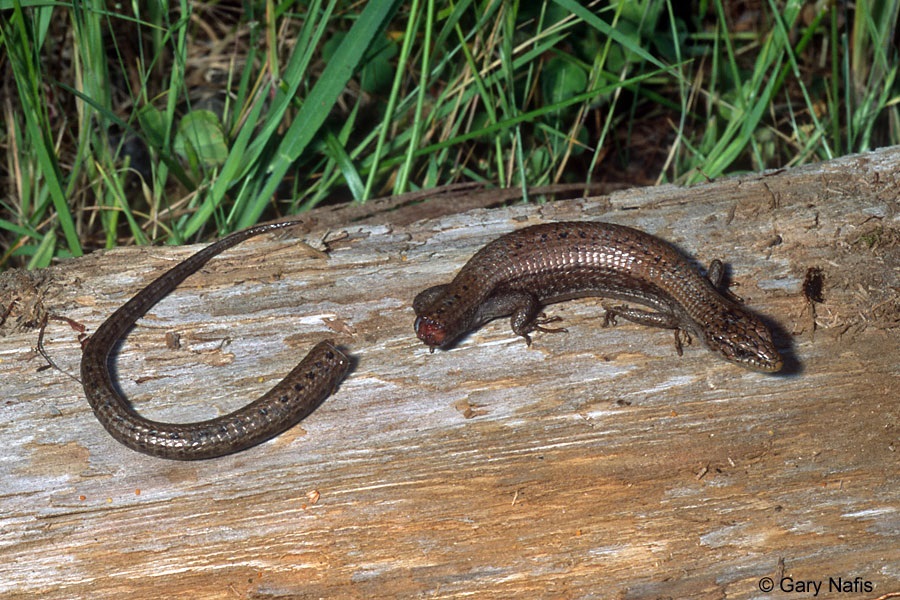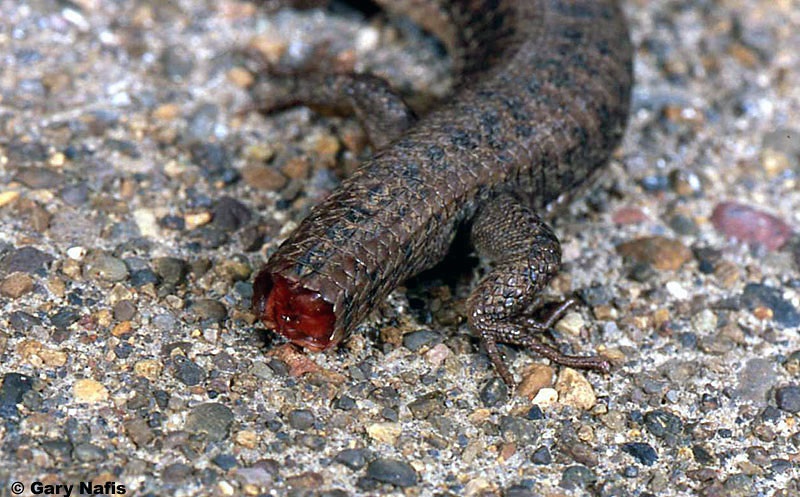
Adaptation
The Elgaria coerulea migrates both short- and long-distances during seasons (Rutherford and
Gregory, 2003). The months of May through August are classified as spring and signify the
mating months for these organisms. E. coreula migrate to rock piles during this time.
Before April 30th and after September 1st is considered hibernation season (Rutherford and
Gregory, 2003). The Elgaria coreula move to new housing areas. Hibernation sites are often
structurally stable and below the frost line. Migration does not exceed outside the Pacific Coast
to Southern British Columbia to Northern Idaho and Western Montana area (Rutherford and
Gregory, 2003). The E. coreula move to new housing areas. Hibernation sites are often
structurally stable and below the frost line. Migration does not exceed outside the Pacific Coast
to Southern British Columbia to Northern Idaho and Western Montana area (Rutherford and
Gregory, 2003).
The Elgaria coerulea
is an active creature during the day, however it is rarely
seen due to th e organism’s ability to quickly move to cover. Shrubs,
rocks, and woodpiles
e organism’s ability to quickly move to cover. Shrubs,
rocks, and woodpiles
are common places for shelter. Human development does
not affect this organism. Low to moderately developed
landscapes, including roads are not a hazard to this
organism, because of high-site fidelity and lack of daily long
distance movements (Rutherford and Gregory, 2003).
The organism is unresponsive to human touch, so
much as it can be held without feeling threatened (Rutherford and Gregory, 2003).
While the E. coerulea is not threated by
human development, house cats
are common predators (Rutherford and Gregory, 2003). When
threatened, the Elgaria
coerulea easily sheds its’ tail. In the situation of being
threatened by a house cat, they

lizard moves its’ tail from side to side in order to
distract the cat. It then sheds the tail and runs
toward cover. While the organism is able to escape,
there are threats to the reduction in reproduction
fitness (Rutherford and Gregory, 2003).
Environmental stimuli include loosing the tail and
quickly running.
The Elgaria coerulea has four, small legs that are
used to run away from predators and move for seasonal migration. The short length of legs
results in fast movements from place to place. The tail is also significant to quick movements,
because
when the tail falls off it moves faster (Rutherford and Gregory,
2003). Through the
elimination of a tail, the lizard has higher chances of distracting
and escaping from
predators. The snake like body makes it possible to swim if
necessary (Rutherford and
Gregory, 2003).